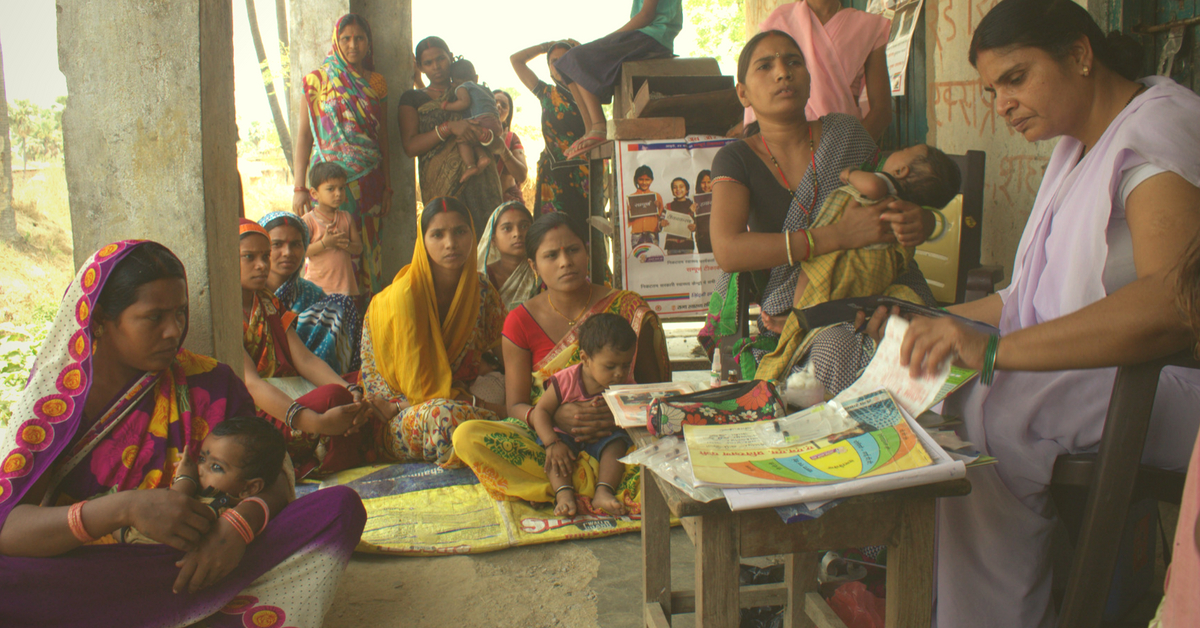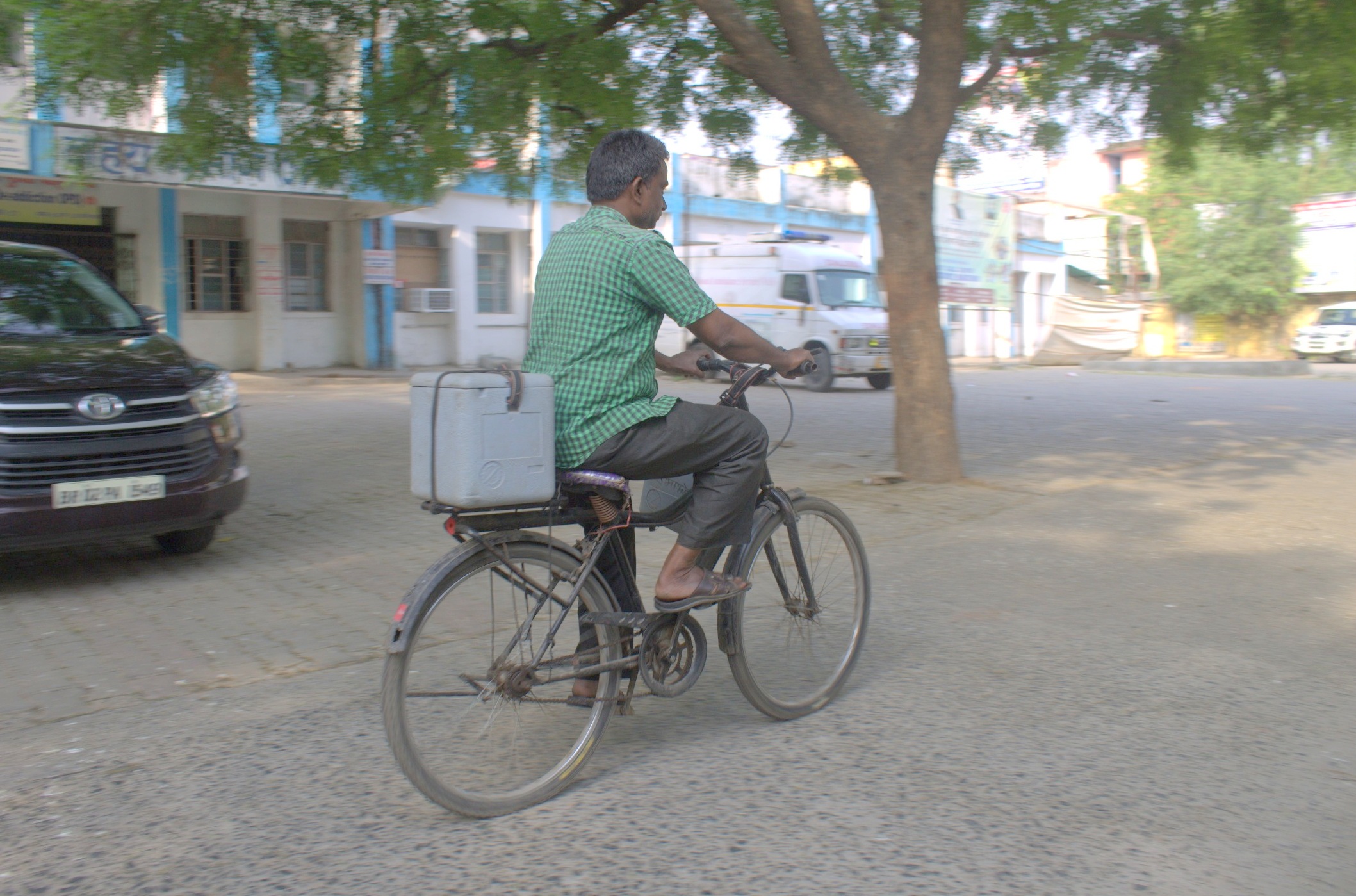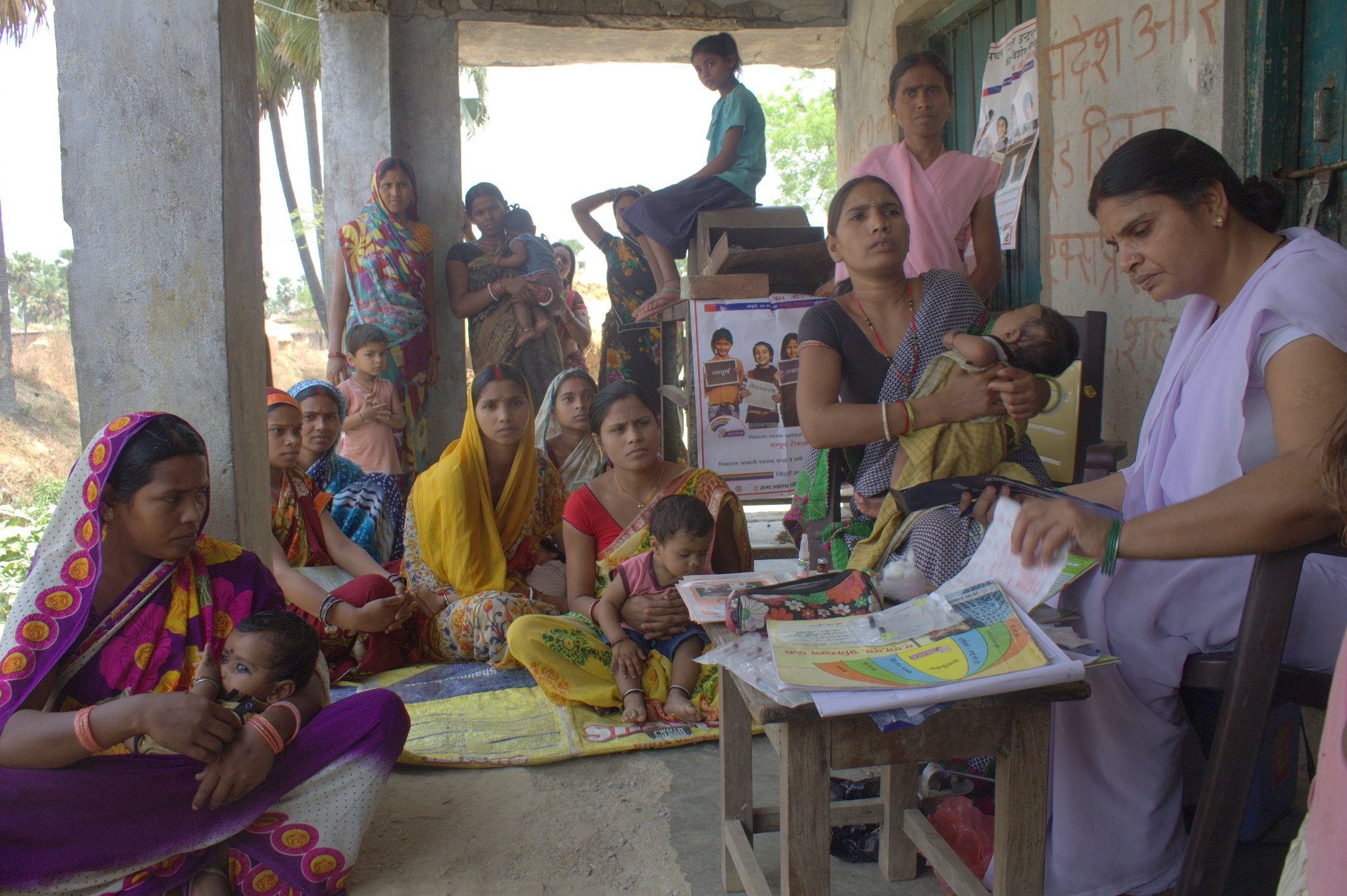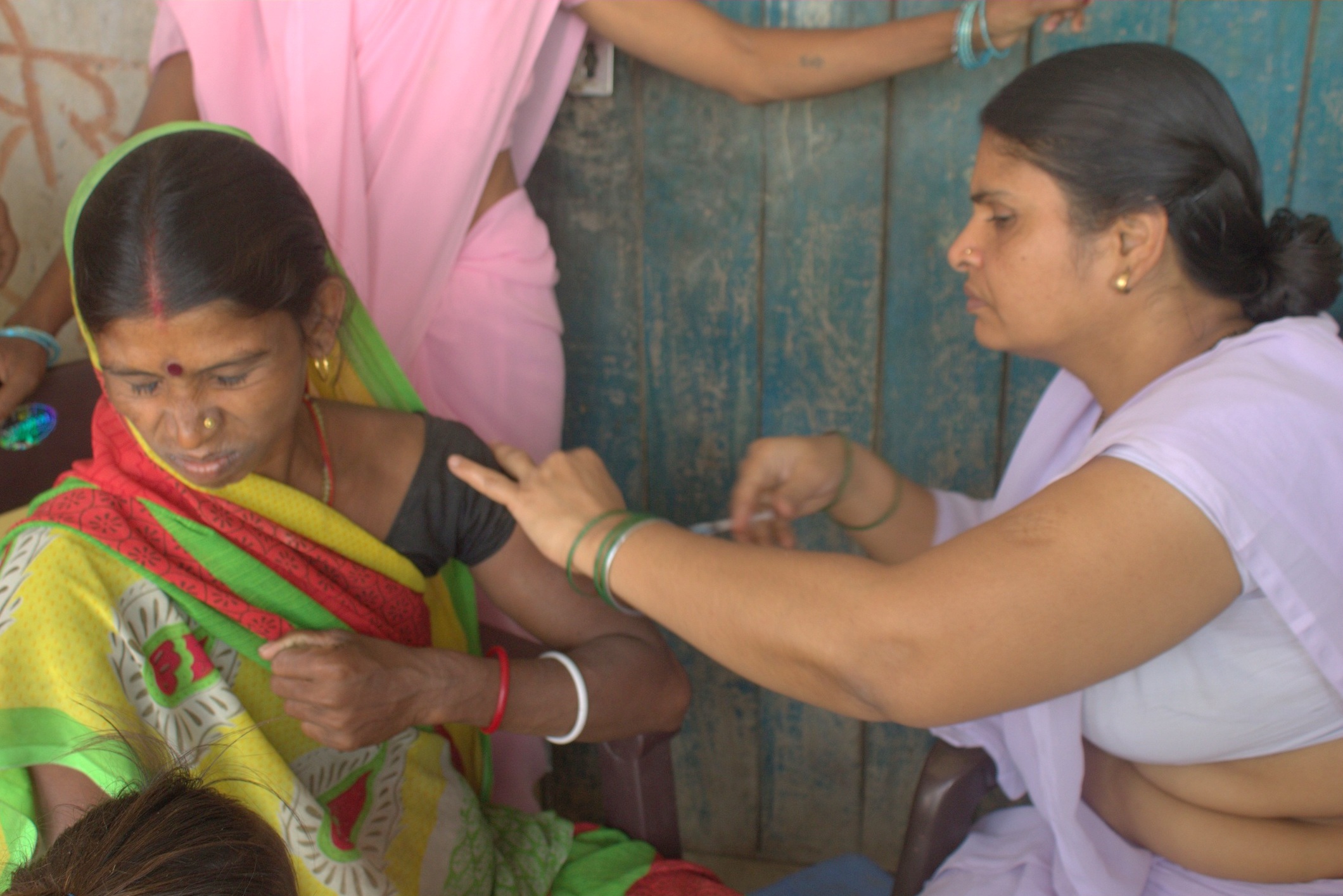Meet the Faceless Heroes Responsible for Shrinking Bihar’s Infant & Maternal Mortality!
Bihar’s immunisation cold chain network runs on 1,946 working cold chain equipment installed across 654 vaccine stores and cold chain points. But it is the women and men who handle and deliver the vaccines who have contributed to the vaccination in the state.

Even at 6.30 am, it is a hot and sultry morning. But Nemhar Minz does not let anything distract her. She knows she has just 30 minutes to finish her work. During this time, she will first take out ice packs from the freezer and let them ‘sweat’. This is to ensure the ice packs are conditioned so that once she places the vaccines meant for pregnant women and children in the cold box along with the ice packs, the temperature is just right.
Then, she will check the temperatures of the vaccines before packing them in cold boxes. As a cold chain handler of the alternate vaccine delivery system, Minz has to complete this process with clockwork precision so that ‘immunisation couriers’ lining up in the compound of the government’s Jay Prakash Narayan Hospital in Gaya by 7 am are not delayed.
Once the boxes are ready, these couriers will be loaded by the delivery personnel, all men, on their bicycles and motorbikes. They start moving to villages where frontline health workers, mothers, pregnant women and infants await vaccines for immunisation.
Bihar has a high under-5 mortality rate of 54 children under the age of five dying for every 1,000 live births.
According to State figures, with over 28 lakh births occurring every year, as many as 1.51 lakh children die annually due to diseases preventable by routine immunisation.

This is why the Universal Immunisation Programme in Bihar aims to immunise 2.8 million children and 3.1 million pregnant women every year. The success of this ambitious goal rests on the smooth functioning of the cold chain management of the Alternate Vaccine Delivery System (AVDS).
Bihar’s immunisation cold chain network runs on 1,946 working cold chain equipment installed across 654 vaccine stores and cold chain points. These include three walk-in freezers, 17 walk-in coolers, 1,039 ice-lined refrigerators and 887 deep freezers where vaccines are stored. But it is the cold chain handlers, mostly women, and the men who deliver these vaccines who are the key to ensuring that immunisation is completed on time, without any hiccups.
With over nine lakh children dropping out of the immunisation programme, and many pregnant women reluctant to come for ante-natal care, these men have to travel between five to 25 kilometres.
They brave tough terrain and hard-to-reach areas, often by cycling and then walking, to prevent them from falling through the cracks.

Dr Syed Hubbe Ali, UNICEF Health Specialist who works closely with the AVDS in Bihar, said that mothers, pregnant women and children can be protected from preventable deaths through safe immunisation.
Since vaccines need to be stored and transported at a certain temperature to ensure their potency and efficacy, they were becoming unusable because there was a lack of proper equipment and understanding to keep them safe.
“But now, women and men spearheading the AVDS understand their importance in saving lives and have played a crucial role in reducing maternal and infant mortality,” he said.
The improved and wider reach of routine immunisation is one of the reasons for the sharp decline in the maternal mortality rate (MMR) in Bihar. In the last four years, MMR has gone down from 203 to 93 deaths per one lakh live births.
Further, the state has improved its infant mortality rate (IMR) from 42 per 1,000 live births in 2015 to 38 in 2016, according to the 2017 sample registration survey (SRS) bulletin.

A key reason for a lower death rate is stated to be the better vaccination against diphtheria, pertussis, tetanus and measles. According to Bihar’s health department , safe delivery of these vaccines has, in fact, been crucial in eliminating the deadly maternal and neonatal tetanus.
The focus on Gaya, one of the high priority districts of Bihar, was intensified in 2015 with the institution of a state-of-the-art cold chain store. The District Vaccine Store (DVS), the first-of-its-kind in Bihar, was developed based on the global WHO-UNICEF criteria of Effective Vaccine Management to iron out immunisation hurdles like vaccine shortage arising out of poor quality storage equipment.
In 2014, before the DVS was established, routine immunisation (RI) in Gaya was 41 per cent. In March 2018, this increased to 81 per cent. This is a big achievement considering 41 per cent of the people live below the poverty line and lack access to quality healthcare.
This is where the vaccine courier carriers are making a difference.
In Gaya, 3,000 people are engaged in delivering the cold boxes to ensure the 5,500 vaccination sessions held in a month in the 24 blocks of the district function smoothly.

They start off at 7 am to deliver these vaccines and then return by 4.30 pm to the vaccine depot to drop off the empty vials for safe disposal. Although they are paid a pittance-just Rs 150 a day, the men remain committed. We are happy that we are helping to save the lives of women and children, they say.
Residents in Sindhuchak know it’s a Friday when they see 60-year-old Kamlesh Prasad cycling down to their village. Prasad has to cycle several kilometres to reach this hard-to-reach village. “When I have to go to Bentanawadhi village, I have to park my cycle in a neighbouring village. Then I have to walk two kilometres to reach there as there is no proper road. During the rainy season, I have to wade across the river to ensure that vaccines reach on time. It’s the same when I have to deliver vaccines to Bhola Bhiga village, which is another two kilometres away. But if I don’t go, it will affect so many women and children. So I have continued to do it for the last ten years,” he said.
Also Read: Fathema Ismail: The Gritty Lady Who Laid The Foundation For a Polio-Free India
36-year-old Ram Girija has also been working to courier vaccines for the last ten years. He lives 11 kms away from the vaccine depot in JPN Hospital. Once he picks up the cold box, he has to travel another 22 kms on the days he has to go to Chakhan village. Although he has a motorcycle, he has to leave it behind in village Cimaria when he has to visit Bandhi Bhigha or Mandaul. Since these villages are alongside the Phalgu river, the roads are undulating and not motorable. During the rainy season, the water overflows and Girija has to walk down balancing the box on his head.
A graduate in Sociology, Girija also doubles up as a pulse polio supervisor, and that has helped to build a rapport with the community. He said that since the community knows him, the accredited social health activist (ASHA) requests him to motivate reluctant pregnant women or mothers. “I once drank vials of polio vaccine just to show them that this did not cause any fatal harm. So, I also help motivate the community to come for immunisation,” Girija said.
Had it not been for motivators like Girija and influencers like Mantu Paswan, 21-year-old Soni Devi of Kaldaspur village would not have brought her three-month-old daughter for vaccination.

Devi had to be persuaded that the fever her child developed during the earlier round of vaccination was normal. It took some time to convince her but finally she understood why immunisation was important for both her as well as her child.
“I will always bring my child because now I know that immunisation saves lives,” said Devi.
It is not Devi alone who has benefitted. Her friends and neighbours have followed her example and understood that when not vaccinated, children at a greater risk of dying before their fifth birthday. With Bihar having two days in a week dedicated to outreach sessions, children have a better chance of survival.
You May Also Like: India’s First Completely Indigenous Vaccine Gets WHO Pre-Qualification!
(Written by Swapna Majumdar and Edited by Shruti Singhal)
Like this story? Or have something to share?
Write to us: [email protected]
Connect with us on Facebook and Twitter.
NEW: Click here to get positive news on WhatsApp!
This story made me
- 97
- 121
- 89
- 167
Tell Us More
We bring stories straight from the heart of India, to inspire millions and create a wave of impact. Our positive movement is growing bigger everyday, and we would love for you to join it.
Please contribute whatever you can, every little penny helps our team in bringing you more stories that support dreams and spread hope.



















